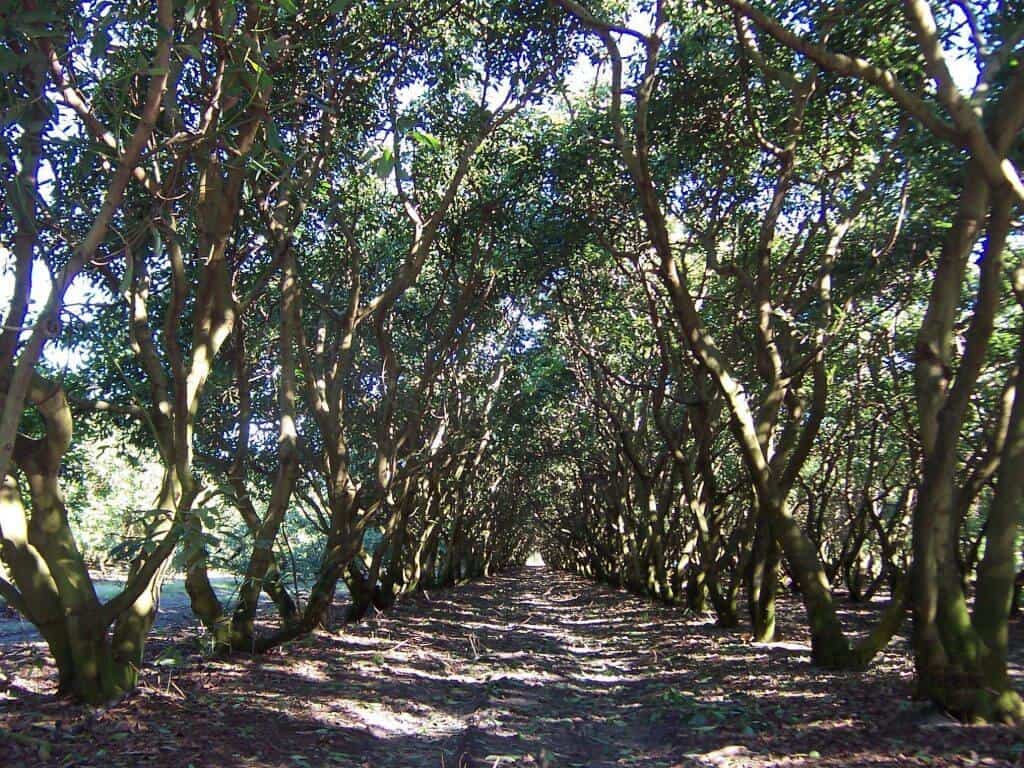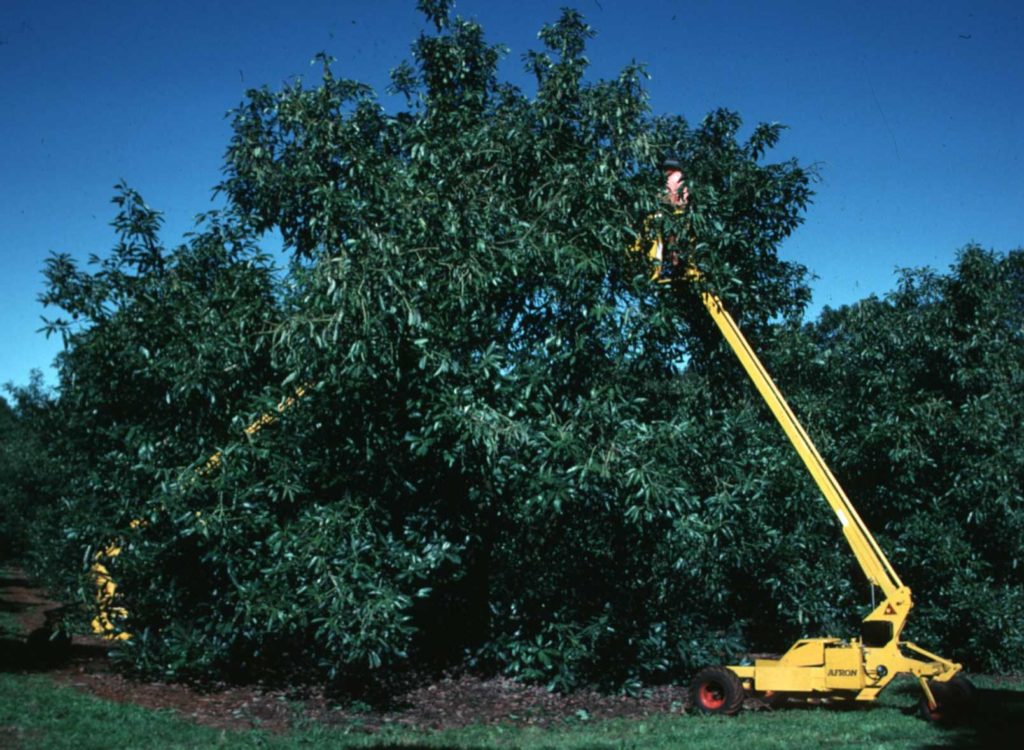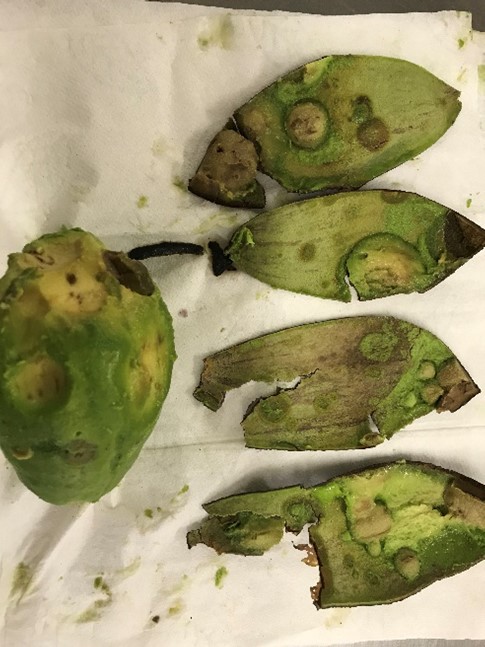Principles of Avocado Canopy Management
This video explains why canopy management is so important for avocado and outlines the main principles. However, a prescriptive approach cannot be provided since growing environments and management styles vary widely and no two orchards are ever the same. A canopy management plan needs to be worked out to suit each orchard.
Mainstream avocado canopy management options
The video below outlines some canopy management options for Hass and Shepard orchards planted at conventional spacings on the east coast of Australia where trees don’t have fruit on the tree all year. It complements the above video. Click on the image below to access the video.
The videos above were produced by DAF as part of project AV17005 “Avocado industry development and extension”.
Jump to these sections in the article:
Acknowledgements
Reasons for canopy management
Rules of thumb for tree size
When to prune?
Cropping Patterns
Acknowledgements
This publication formed part of project AV04008 and was funded using the Avocado Industry levy and funds from the Australian Government through Horticulture Innovation Australia Limited. All dollar values within this publication are estimates only provided as a relative guide of costs.
Thanks to all growers who provided information on their canopy management operations including: Agriexchange Pty Ltd; Avowest; Balmoral Orchards; GJ & MM Burch; Coastal Avocados; Delais Orchards; Donovan Family Investment Trust; CF Fechner; Gala Orchards; Hilltop Mareeba; Lavers Orchards; I & R Philpott; D & D Roche and Son; Simpson Farms Pty Ltd; Smerdon Enterprises Pty Ltd; Thistledome Farms; Toohey Farming and Yaldon Park. Simon Newett (Queensland Department of Agriculture and Fisheries) and Lachlan Donovan (Donovan Family Investment Trust) provided valuable comments and contributions in compiling this booklet.
Reasons for canopy management
• Optimise light interception and penetration into the orchard
• Maintain inter-row space for machinery access
• Reduce harvesting costs and improve picker safety
• Improve efficiency of spraying operations to control pests and diseases
• Maximise yields and fruit quality



Rules of thumb for tree size
For optimum levels of sunlight to reach the tree canopy:
1. The height of the tree should not exceed 80% of the distance between tree rows.


2. Tree height should be less than 2.5 times the width of the canopy-free inter-row space (e.g. If requiring a 2m clearance for machinery access down the row, the maximum tree height should be 5m.)
3. No part of the tree canopy should be more than 2 to 2.5m from direct sunlight. Maximum canopy width should be 4 to 5m. Note: this is the ideal theoretical situation but is often impractical. In cool production areas with low vegetative vigour it can be achieved in very high-density plantings with upright varieties such as Reed and Lamb Hass.
When to prune?
Pruning time will depend on the growing environment. Knowing the cropping cycle is important in determining when trees are best pruned.
Cropping patterns
Shoot growth, flowering and fruiting cycles vary from region to region.
Less than 12 months from flowering to harvest:
In warm subtropical climates (e.g. North and Central Queensland and coastal areas of South-East Queensland) the crop can be harvested up to several months prior to next season’s flowering.







In these environments pruning operations are normally done after harvest and prior to flowering. Follow up pruning to remove watershoots and to reduce the spring growth flush are often made in summer.
More than 12 months from flowering to harvest:
In cooler temperate climates (e.g. hinterland areas of Southern Queensland and Northern NSW, Central NSW) and Mediterranean climates (the Tristate region and south-west Western Australia) it is normal for the tree to carry two crops for a period of time. Mature fruit as well as the current season’s crop.







In these environments, pruning after harvest will not only remove flowers and developing fruit but can also expose this fruit to sunburn. Pruning (typically selective limb removal) is often carried out after the “on” year harvest and when trees are in an “off” year to minimise fruit loss. Mechanical tip pruning of young trees in late autumn has also been used in these environments.



